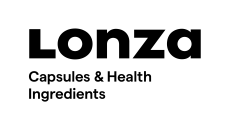Organic undersupply stunts market growth, OTA
US organic food manufacturers, according to a new report by the
nation's industry association.
But despite supply challenges, the market continues to see strong growth, mirrored by the expansion in the range of organic products available, and the retail outlets that carry them According to the Organic Trade Association's (OTA) 2007
Manufacturer Survey, organic foods are one of the fastest growing segments in the industry, with sales in 2006 increasing 21 percent to reach $16.7bn.
But results from the group's latest survey of organic manufacturers reveal that as more organic products are being churned out onto the market, securing raw materials is becoming a growing challenge.
Some 55 percent of survey respondents in 2007 said that a lack of dependable supply restricted their company from generating more sales of organic products.
This compares to 52 percent last year.
Meat and dairy are amongst the categories hit in recent years by supply shortages, and according to OTA's new report these continued to be the two fastest-growing segments in 2006.
Demand for meat, which is currently the smallest category in the organic food market, shot up by 55 percent last year, placing total sales at $300m. Dairy, the largest organic segment, saw a 25 percent increase in sales, to reach a value of $2.6bn.
Fruit and vegetables saw the smallest growth rate between 2005 and 2006 (11 percent), but demand is forecast to pick up in 2007, with the category set to see the third largest growth rates this year (24 percent).
These three categories tend to be the most affected by consumer health and safety concerns.
In a year that has seen a number of contamination cases linked to meat and fresh cut vegetables, the backlash in consumer demand has benefited the sale of organic products, which are often perceived as 'safer'.
According to OTA, organic manufacturers are also increasingly flagging up their products with the US Department of Agriculture's (USDA) organic seal.
Almost 60 percent of survey respondents said they display the USDA Organic seal on some of their products.
Of the 41 percent who do not currently use the packaging symbol, 42 percent said they intend to in the future.
However, 15 percent of survey respondents said USDA labeling requirements and certification programs had "dramatically increased" their ability to generate sales of organic products, a decrease from 17 percent who said this in the 2006 survey.
"Organic foods are now present in every food retail channel, whether it be in restaurants offering organic beef or mass merchandisers offering hundreds of stock-keeping units of organic products," said OTA.
"More and more US consumers, regardless of income, have access to organic foods because these foods are now in the same stores where they are already shopping."
According to the new report, mass market grocery stores represent the largest single channel for organic products, accounting for 38 percent of US organic food sales in 2006.
In addition, another 8 percent of organic food and beverage sales were through mass merchandisers and club stores.
Sales have also increased in foodservice outlets as well as via Internet and mail order sales Indeed, the scope of the sales tracked by OTA for its annual report are more far-reaching than other market studies.
The association said its report tracks sales in: natural food large grocery chains; natural food small chains and independent stores ; mass market grocery stores (supermarkets) ; mass market mass merchandisers (Target, Wal-Mart, etc.) ; mass market club stores (BJ's, Sam's Club, etc.) ; food service ; farmers' markets ; export ; internet and mail order ; boutique and specialty shops ; and department stores.
This explaines the difference in the figures reported by OTA and Mintel, which also yesterday released a report on the nation's organic market.
Mintel values the organic food and beverage industry at nearly $6bn.
Organic food sales have increased 132 percent since 2002, while organic beverage sales have risen 97 percent in the period.
The market researcher said it draws up market size data using sources from: Mintel/SPINSscan Natural/SPINSscan conventional ACNielsen ScanTrack/OTA.












